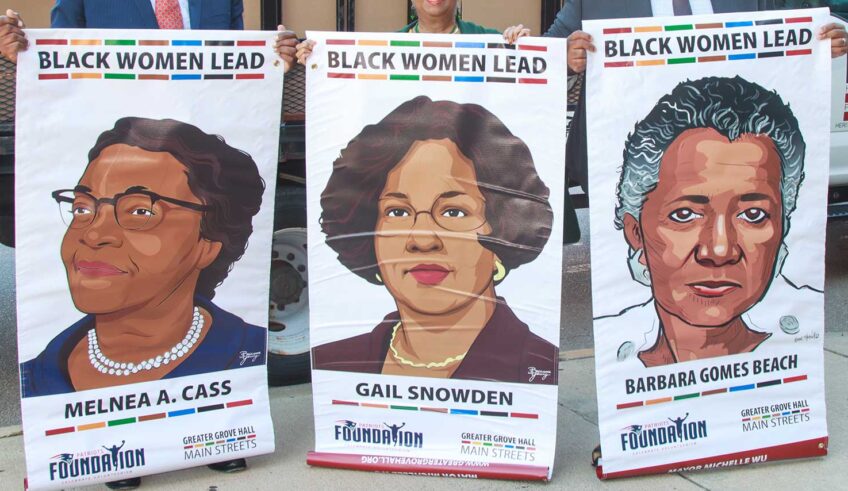This news item shocked some. Two unnamed Academy members said they picked “12 Years a Slave” as their choice for Best Picture, yet, candidly admitted that they did not see the film. They minced no words as to why. It was just too painful and disturbing to watch this kind of film. But this really shouldn’t be much of a shock. Facing the horror of slavery is a tough nut to crack not simply because it entails facing an inconvenient truth about past racial dehumanization, but because it entails facing the real truth that slavery still corrodes in big and little ways American life. This starts with the truth of why and how slavery became a respected and legitimate part of American life in the first place.
The U.S. government encoded slavery in the Constitution and protected and nourished it for a century. Traders, insurance companies, bankers, shippers and landowners made billions off of it. Their ill-gotten profits fueled America’s industrial and agricultural might. For decades after slavery’s end, white trade unions excluded blacks and confined them to the dirtiest, poorest paying jobs.
While it’s true that many whites and non-white immigrants came to America after the Civil War, they were not subjected to the decades of relentless racial terror and legal segregation as were blacks. Through the decades of slavery and Jim Crow segregation, African Americans were transformed into the poster group for racial deviancy. The image of blacks as lazy, crime- and violence-prone, irresponsible, and sexual predators has stoked white fears and hostility and served as the standard rationale for nearly 4,000 documented lynchings between 1882 and 1968, as well as the countless racial assaults and acts of hate crime violence.
Though some blacks earn more and live better than ever today and have gotten boosts from social and education programs, civil rights legislation, and affirmative action programs, the hideous legacy of slavery is still ever-present. The National Urban League in its annual State of Black America reports consistently finds that young blacks are far likelier than whites to be imprisoned, serve longer terms, and are more likely to receive the death penalty even when their crimes are similar.
Blacks continue to have the highest rates of poverty, infant mortality, violence victimization rates, and health care disparities than any other group in America. They are still more likely to live in segregated neighborhoods and be refused business and home loans. Their children are more likely to attend failed public schools than any other group, and more likely to be racially profiled on America’s urban streets.
The U.S. government admitted it was legally liable in 1997 to pay the black survivors and family members of the two-decade long syphilis experiment begun in the 1930s by the U.S. Public Health Service that turned black patients into human guinea pigs. The survivors got $10 million from the government and an apology from President Bill Clinton. They were the victims of a blatant medical atrocity conducted with the full knowledge and approval of the U.S. government.
The state legislature in Florida in 1994 agreed to make payments to the survivors and relatives of those who lost their lives and property when a white mob destroyed the all-black town of Rosewood in 1923. This was a specific act of mob carnage that was tacitly condoned by some public officials and law enforcement officers. Florida was liable for the violence and was duty bound to apologize and pay. The Oklahoma state legislature has agreed at least in principle that reparations and apology should be made to the survivors of the dozens of blacks killed, and the hundreds more that had their homes and businesses destroyed by white mobs with the complicity of law enforcement in the Tulsa massacre of 1921.
A bill by Michigan Congressman John Conyers that has been kicked around Congress since 1989 to establish a commission to study the impact of slavery and the feasibility of paying reparations to blacks has gone nowhere in Congress. Reparations is simply too risky, divisive, and distracting for Congress to seriously consider. President Obama, however, has spoken at times about the need to spend more on education, job and housing programs as the best way to deal with the ills of the black poor.
The brutal truth is that a mainstay of America’s continuing racial divide is its harsh and continuing mistreatment of poor blacks. This can be directly traced to the persistent and pernicious legacy of slavery. But from the comments and actions of at least some Academy of Motion Picture Arts and Sciences members even watching a movie about slavery that’s set a century and a half ago is too much to take. Think what it would take for them to connect the dots from then to now, and that tells why America still refuses to face its slave past.
Earl Ofari Hutchinson is an author and political analyst. He is a frequent MSNBC contributor. He is an associate editor of New America Media. He is a weekly co-host of the Al Sharpton Show on American Urban Radio Network. He is the host of the weekly Hutchinson Report on KTYM 1460 AM Radio Los Angeles and KPFK-Radio and the Pacifica Network.






